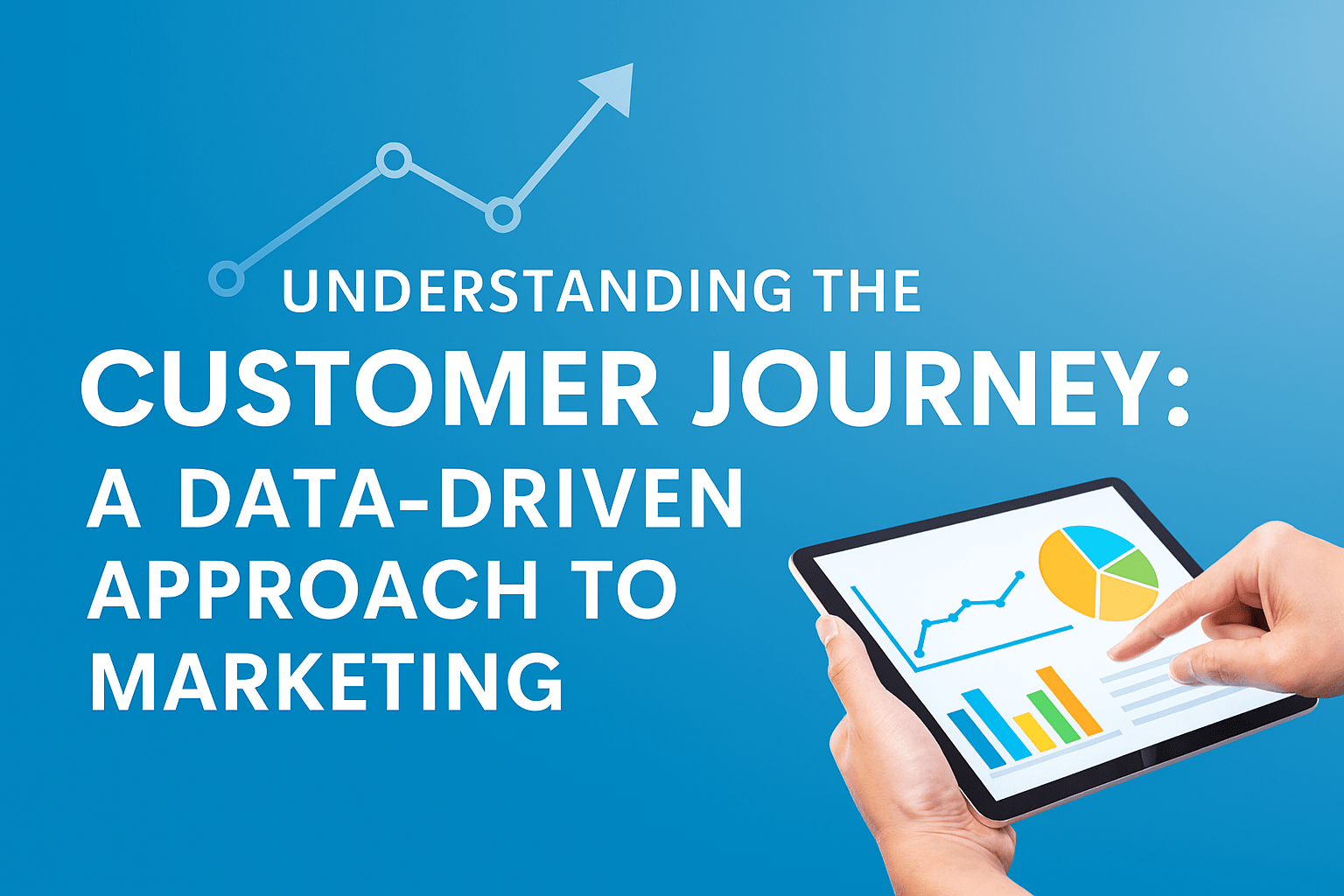Understanding the Customer Journey: A Data-Driven Approach to Marketing

In today’s competitive digital landscape, understanding the customer journey marketing is essential for driving engagement, increasing conversions, and maximizing ROI. A data-driven approach allows businesses to map the entire customer journey accurately, predict behavior, and deliver personalized experiences that resonate with target audiences.
This article delves into the concept of the customer journey, the role of data in marketing, and actionable strategies to create campaigns that convert at every stage.
What is the Customer Journey?
The customer journey represents the complete experience a customer has with a brand, from initial awareness to post-purchase engagement. Understanding this journey helps marketers identify pain points, optimize touchpoints, and deliver relevant messaging at every stage.
Key stages of the customer journey include:
-
Awareness: The customer discovers your brand through marketing channels such as social media, search engines, or referrals.
-
Consideration: Potential customers evaluate your products or services compared to competitors.
-
Decision: The customer makes a purchase or commits to your service.
-
Retention: Post-purchase engagement ensures repeat business and loyalty.
-
Advocacy: Satisfied customers become brand advocates, driving referrals and organic growth.
The Importance of Data in Customer Journey Marketing
A data-driven approach enables businesses to:
-
Identify patterns: Understand how customers interact with different touchpoints.
-
Personalize experiences: Tailor messaging based on user behavior and preferences.
-
Optimize marketing spend: Allocate resources to channels and campaigns that generate the highest ROI.
-
Predict outcomes: Use predictive analytics to anticipate customer behavior and improve conversion rates.
Data sources include web analytics, CRM systems, social media insights, customer feedback, and transaction history. Integrating these sources provides a comprehensive view of the customer journey.
Mapping the Customer Journey: Step-by-Step
Creating an effective customer journey marketing map requires a structured approach:
1. Define Your Customer Personas
Identify your target audience segments based on demographics, behavior, and needs. Understanding who your customers are allows you to create relevant content and touchpoints.
2. Identify Touchpoints Across Channels
List all interactions customers have with your brand, including:
-
Website visits
-
Email campaigns
-
Social media engagement
-
Paid advertising
-
In-store or offline experiences
3. Analyze Customer Behavior
Use analytics tools to track how customers move through each touchpoint. Metrics to consider include:
-
Page views and time on site
-
Email open and click rates
-
Social media engagement
-
Conversion rates
4. Identify Pain Points and Opportunities
Examine where customers drop off or encounter friction. Addressing these gaps improves the overall journey and increases satisfaction.
5. Optimize and Personalize
Implement personalized content, targeted campaigns, and automated marketing workflows to enhance engagement and drive conversions.
Data-Driven Strategies for Customer Journey Marketing
1. Personalization at Scale
Use data to deliver relevant messages based on user behavior, location, and preferences. Personalized experiences increase engagement and build brand loyalty.
2. Marketing Automation
Leverage automation tools like HubSpot, Marketo, or Salesforce to deliver timely, data-driven messages across multiple channels. Automation ensures consistency and reduces manual effort.
3. Predictive Analytics
Predictive models help anticipate customer needs and behaviors, enabling proactive engagement strategies such as retargeting campaigns or personalized recommendations.
4. Multi-Channel Integration
Integrate online and offline channels to ensure a seamless customer journey. Cross-channel campaigns improve brand recognition and increase conversion rates.
5. Continuous Optimization
Regularly analyze performance metrics to refine campaigns. A/B testing, customer surveys, and behavioral analytics are crucial for ongoing optimization.
Measuring the Success of Customer Journey Marketing
To ensure your data-driven marketing efforts are effective, track key performance indicators (KPIs) such as:
-
Customer Engagement: Track interactions across all touchpoints.
-
Conversion Rates: Measure how many prospects become paying customers.
-
Customer Retention: Monitor repeat purchases and loyalty program participation.
-
Customer Lifetime Value (CLV): Calculate long-term revenue potential per customer.
-
ROI: Evaluate the efficiency and profitability of marketing campaigns.
Using integrated analytics platforms provides a unified view of all metrics, helping marketers make informed decisions.
Common Challenges in Data-Driven Customer Journey Marketing
-
Data Silos
Disconnected systems can lead to incomplete customer insights. Integration is key for a holistic view. -
Overcomplicated Workflows
Too many touchpoints or excessive personalization can overwhelm customers. Focus on high-impact channels first. -
Privacy and Compliance Issues
Ensure compliance with GDPR, CCPA, and other data privacy regulations when collecting and using customer data. -
Limited Analytics Skills
Lack of expertise in data analysis can reduce the effectiveness of campaigns. Invest in training or consult analytics experts.
Future of Customer Journey Marketing
The future is increasingly driven by AI, machine learning, and predictive analytics. Marketers can leverage:
-
AI-powered personalization: Delivering hyper-relevant content in real time.
-
Voice and visual search integration: Engaging customers across emerging technologies.
-
Behavioral segmentation: Grouping customers dynamically based on evolving behavior.
Data-driven customer journey marketing will continue to evolve, making insights more actionable and campaigns more efficient.
Understanding the customer journey marketing is essential for creating impactful, data-driven campaigns. By mapping touchpoints, analyzing behavior, personalizing experiences, and continuously optimizing, businesses can improve engagement, boost conversions, and maximize ROI.
Adopting a data-driven approach ensures marketing decisions are informed, targeted, and measurable, positioning your brand for sustained success in the digital age.
